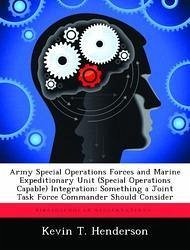Nicht lieferbar

The Organization and Training of Joint Task Forces
Versandkostenfrei!
Nicht lieferbar
The United States continues to challenge its military forces to provide maximum capability with minimum resources. In order to meet that challenge effectively, the US must take full advantage of the synergy provided by the unified action of joint forces. Those forces are employed in a wide variety of missions that change during development and execution. Formation of the joint task force (JTF) is one of several options to organize our military forces. This thesis examines the organization, training, doctrine, and experience of joint task forces within each of the five geographically tasked uni...
The United States continues to challenge its military forces to provide maximum capability with minimum resources. In order to meet that challenge effectively, the US must take full advantage of the synergy provided by the unified action of joint forces. Those forces are employed in a wide variety of missions that change during development and execution. Formation of the joint task force (JTF) is one of several options to organize our military forces. This thesis examines the organization, training, doctrine, and experience of joint task forces within each of the five geographically tasked unified commands. The thesis compares JTF operations in Somalia, Haiti, Panama, Northern Iraq, and Hawaii along with current unified command plans for organizing and training JTFs. US Atlantic Command plans are described in detail because of this command's role as a joint force integrator. The thesis notes that most commands build a JTF core from a subordinate component headquarters augmented by joint specialists from the unified command headquarters and other service component resources. Unified commands choose the core headquarters based on ability to perform the specific mission and augment from other services appropriately. The thesis concludes that US armed forces are improving their ability to train and organize JTFs effectively. Continued improvement is required because current doctrine for training joint task forces is immature and the training programs implementing the doctrine are relatively new.












